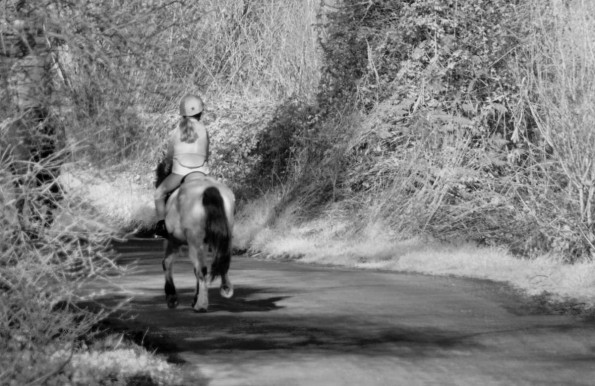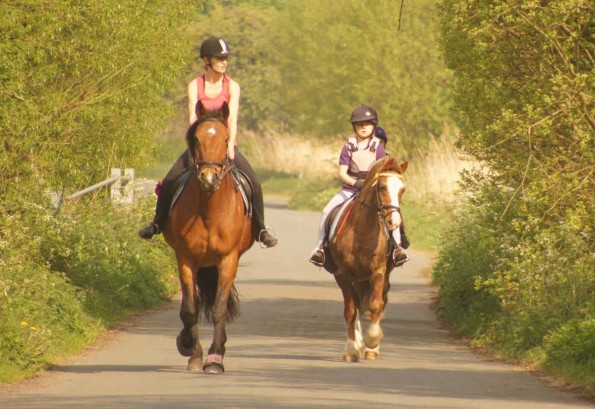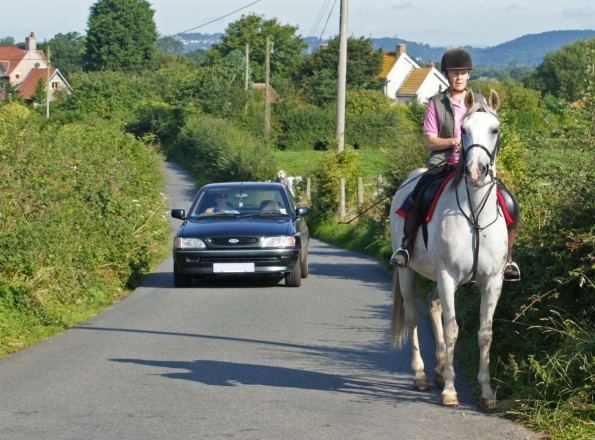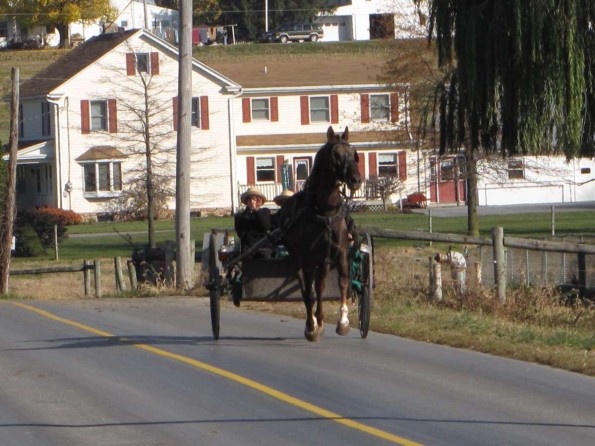You will more likely encounter horses on rural roads, particularly if there are equestrian training facilities, pony clubs or larger lifestyle block properties where residents might keep one or two horses for their children.
Collision risk
Horses are prey animals with very little in the way of defences except to run and kick. If they are startled they can rear up or bolt, both of which can throw the rider into the path of traffic. If they jump into your path you will have 500kg of animal hitting you. For a motorcyclist, this can be fatal; for a car it can cause major injuries due to the body of the horse hitting the windshield; for a large heavy vehicle it can cause costly damage which takes your truck off the road for a period of time.
Rights, rules and signals
Riders will generally choose to ride on the verge if possible, but in some cases they will have to ride on the road. Or, they might be training an inexperienced horse to ride on the road.
A horse rider can signal to you, the driver. Slow down is signalled by an arm held out and moving the hand up and down. A raised hand means stop.
Overtaking a horse
The essential thing to do when passing a horse is to slow down. The British horse society recommends 25kph as a safe passing speed. This assumes that you don’t have your stereo blaring as this can still frighten a horse.
As you approach the horse, brake in good time. Always assume that the rider and horse haven’t seen you. Don’t use your horn to warn them. If you are driving a hybrid or electric vehicle, your vehicle will probably be much quieter. This can mean that the horse (which has a blind spot behind it), doesn’t hear your vehicle approaching until the last moment.
While horses with riders have the same rights on the road as motorists, younger riders might not fully understand what this means and, as they might never have driven a car before, could misjudge distances and speeds (especially how long it can take a heavy vehicle to stop).
If there’s another vehicle coming towards you, it’s best to wait so that you can give the horse and rider the maximum amount of room. Even if the rider is on the verge, it’s best to give the horse as much room as possible.
Indicate to the right and pull out. Stay as far right as is practical. Be careful of gravel road shoulders as these change the noise of your vehicle instantly and can spook the horse.
Accelerate away gently. Hard acceleration, particularly if you have a motorbike or a car with a sports exhaust and blow-off valve, can frighten a horse.
Towing a trailer
If you are towing a trailer that is wider than your car, make sure you give extra room, and wait longer before you pull back into your lane.
Awareness of risk on narrow roads
On a rural local access road, the lane width is 3 metres each way with a 0.5m shoulder. However, some older roads are not this wide. A horse can take up half a lane which means that you will need to go into the opposing lane to overtake.
If there are vehicles coming towards you, you will need to stop. This is why it’s important when driving on narrow rural roads that you can stop in the distance of clear road you can see in front of you (if it’s two lane), or half the distance you can see in front of you (if it’s single lane – because the vehicle coming towards you needs time to stop, too).

Horse and rider taking up a large proportion of a single-laned road
Riding two-abreast
It’s far more risky for riders to ride two-abreast on the road. However, in the case of the image below an experienced rider is supervising a novice rider. The novice rider could ride in front, though.

Ideal driving position
The following photo shows that the horse rider has stopped the horse as close to the edge of the road as possible (the verge isn’t rideable in this case) and is waiting for the car to overtake. The car is as far right as possible.

Car approaching horse and rider from behind
Horses pulling buggies

When overtaking a buggy, be sure that you don’t break any rules where there are road marking that prevent you from crossing them. A buggy will be the same width as a vehicle.
